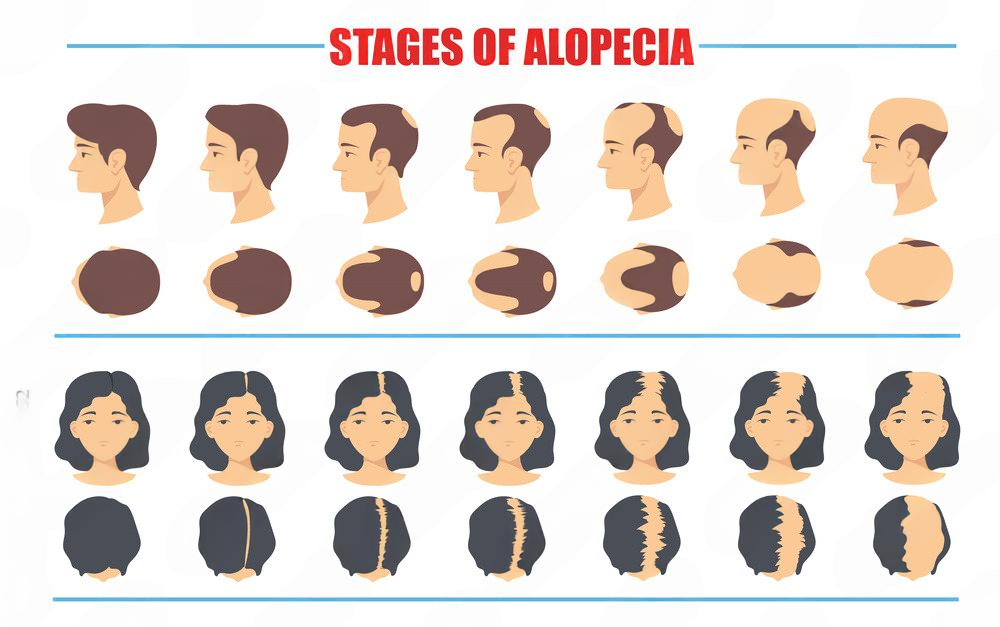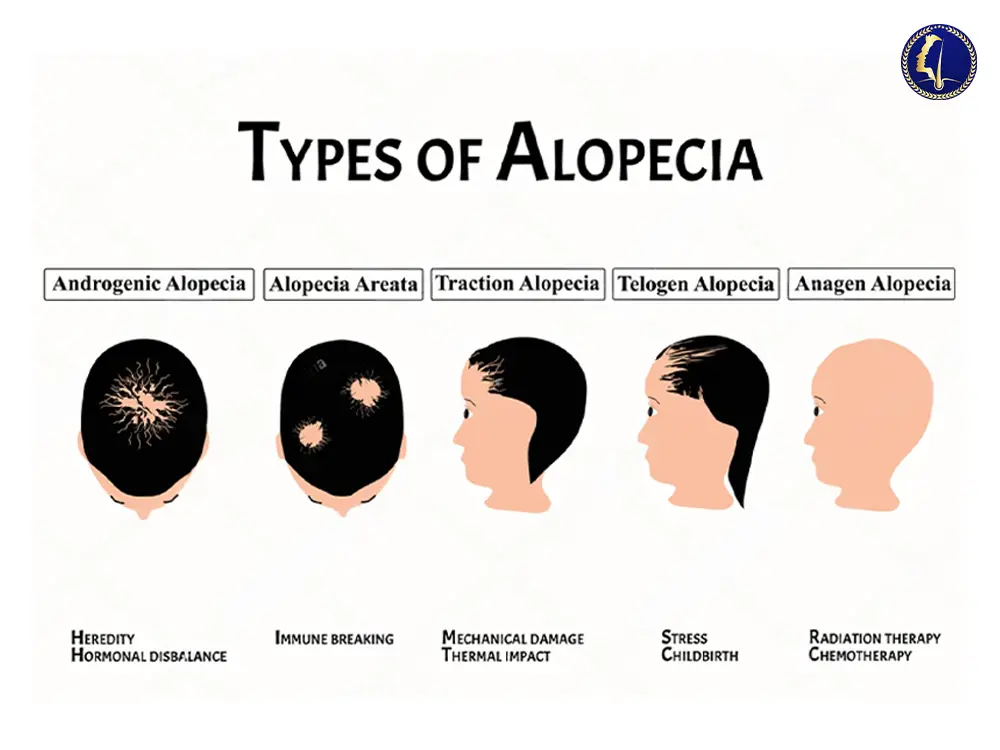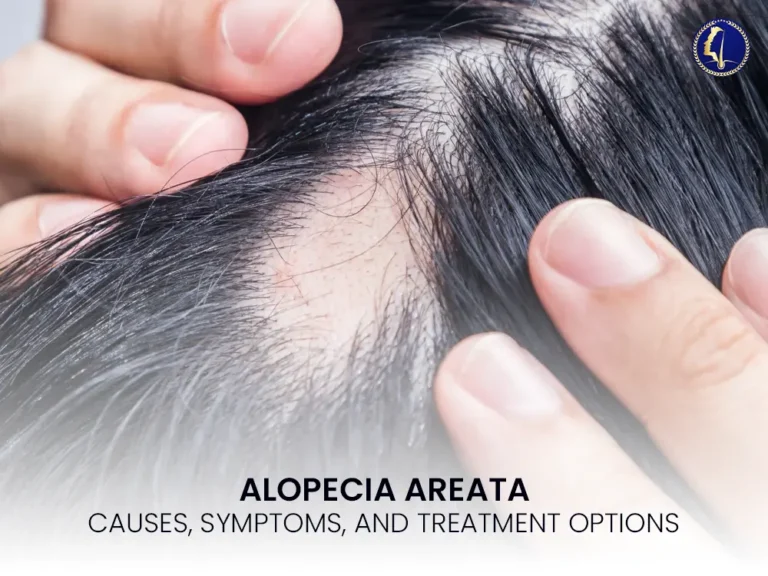What Is Alopecia Areata?
Alopecia areata is an autoimmune condition where the body’s immune system mistakenly attacks healthy hair follicles, leading to sudden hair loss in round or oval patches, most commonly on the scalp. However, it can also affect the eyebrows, eyelashes, beard, or body hair.
It is non-scarring (no permanent damage to follicles) and may be temporary or long-lasting, depending on severity and treatment.
Causes of Alopecia Areata
While the exact cause is unknown, alopecia areata is believed to be triggered by a combination of genetic, autoimmune, and environmental factors. Common contributors include:
Autoimmune response – The immune system targets hair follicles.
Genetics – Often runs in families.
Stress – Emotional or physical stress may contribute to flare-ups.
Infections or Illnesses – Viral infections or immune triggers.
Other autoimmune diseases – Like thyroid issues or vitiligo.
Common Symptoms

Sudden appearance of round, smooth bald patches on the scalp or beard.
Tingling or mild discomfort in affected areas before hair loss.
Exclamation mark hairs – Short, broken hairs at patch borders.
Nail changes (ridges, pitting) in some patients.
Types of Alopecia Areata

| Type | Description |
|---|---|
| Alopecia Areata | Patchy hair loss on the scalp or face |
| Alopecia Totalis | Complete loss of hair on the scalp |
| Alopecia Universalis | Loss of all body hair (including eyebrows, eyelashes, body hair) |
| Ophiasis Pattern | Hair loss in a wave-like pattern around the sides and lower back of the scalp |
Diagnosis
Diagnosis is typically clinical and may involve:
Physical scalp examination
Dermatoscopy to examine hair follicles
Blood tests to check for autoimmune markers or thyroid dysfunction
Biopsy in rare or unclear cases
Treatment Options for Alopecia Areata
While there is currently no cure, several effective treatments help stimulate regrowth or manage symptoms:
🔹 Topical Treatments
Topical corticosteroids – Reduce inflammation and immune response
Minoxidil (5%) – Promotes blood flow and hair regrowth
Anthralin – Used for chronic cases, encourages irritation-regeneration cycle
🔹 Injectable Corticosteroids
Intralesional steroid injections into the bald patches are commonly used for mild or moderate patchy alopecia with high success rates.
🔹 Oral Treatments
Corticosteroids for short-term control of widespread hair loss
JAK inhibitors (tofacitinib, baricitinib) – Advanced immunotherapy with promising results
Immunosuppressants – Used under specialist care for resistant cases
🔹 PRP Hair Injection (Platelet-Rich Plasma)
Promotes natural healing and hair regrowth using the patient’s own blood plasma
Often combined with microneedling for better results
Lifestyle & Supportive Care
Reducing stress and managing autoimmune triggers
Using cosmetic camouflage like wigs, makeup, or microblading
Joining support groups for mental and emotional health
Using UV protection on bald patches to prevent sunburn
Prognosis
The outcome of alopecia areata varies. Some patients experience spontaneous hair regrowth within months, while others may have chronic or recurring episodes. Early treatment typically improves outcomes.
FAQs About Alopecia Areata
1. Is alopecia areata permanent?
Not always. Many cases see spontaneous regrowth, though recurrence is common.
2. Can alopecia areata be cured?
There is no cure, but treatments are available to manage and stimulate regrowth.
3. Is alopecia areata contagious?
No. It is an autoimmune condition and cannot be spread to others.
4. Will my hair grow back the same?
Regrown hair may initially appear white or fine, but normal color and texture often return.
5. Who should I consult for alopecia areata?
Consult a dermatologist or hair restoration specialist for accurate diagnosis and treatment.
Seeking Alopecia Areata Treatment in Malaysia?
If you’re experiencing patchy hair loss, early intervention can make a significant difference. Clinics like GLOJAS Aesthetic Clinic offer medical evaluations, scalp therapies, and advanced treatments such as PRP and corticosteroid injections to support regrowth safely and effectively.
